One of the most respected development studios of all time, Bethesda Game Studios has brought us some of the most iconic series including The Elder Scrolls and Fallout series. Their last major release, Fallout 76, was met with mixed reviews, claiming the game was half-baked and lacking the charm and soul that previous games in the Fallout series had. Starfield is Bethesda’s first original IP in 25 years and promises to be the most complex and detailed game they’ve ever developed. Spoiler alert: that promise is met.
Having previously explored the vast fantasy land of Tamriel and the post-apocalyptic world of Fallout, I had high expectations going into Starfield. Hearing just how large-scale the game was going to be prior to launch, I went into the game cautiously optimistic. While the game isn’t the 10/10 experience I wanted it to be, it still met my expectations and I can comfortably say that it will be as impactful as Bethesda’s flagship IPs.
This review is spoiler-free and will only discuss the story at surface level. The main focus of this review will be on Starfield’s mechanics and how cohesive the overall experience is.
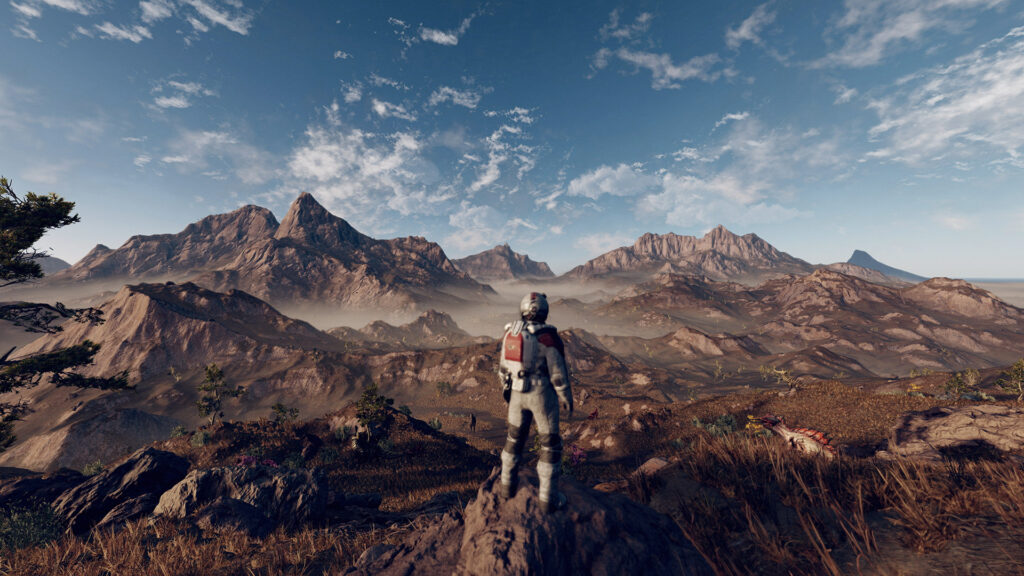
Set in 2330, Humanity has long left Earth and has colonised a small pocket of the galaxy known as the Settled Systems. The Settled Systems boasts around 1,000 explorable planets that extend up to 50 light years away from Sol (our solar system). You, the player, are a humble miner working for Argos Extractors who stumbles across an alien artifact and experiences a vision. This vision prompts you to join a space exploration group called The Constellation which endeavours to collect all of the artifacts and find out the mystery surrounding them.
It would be a detriment to the experience if I went further into Starfield’s plot. Instead, I will say that I thoroughly enjoyed the main questline. The narrative was so captivating that by the end of the game, I could not steer myself towards any side quests because I was that engrossed in the story. By no means is that a dig at the side quests, what Bethesda does best is tell multiple engaging stories (no matter how small) through their games. Coming off of the back of Final Fantasy XVI’s uninspired and lacklustre side quests, this was such a breath of fresh air.
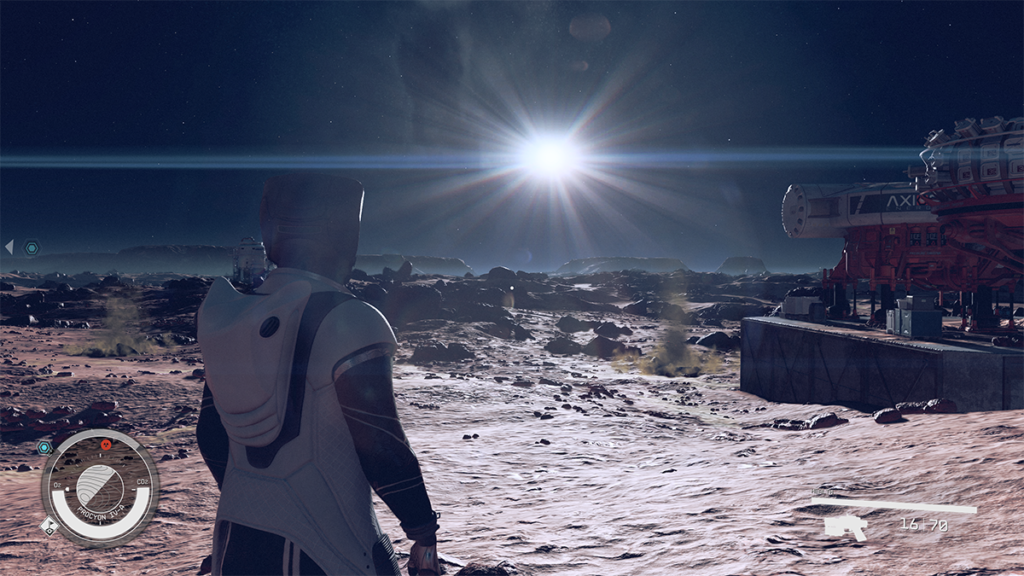
Bethesda’s quintessential RPG formula is replicated in Starfield. It’s Fallout 4 – in space. After the first hour of the game, you are free to explore the galaxy at your own pace. Become a space pirate, a security guard, a debt collector, or pursue your main purpose as a member of the Constellation. While the main questline is around 15-20 hours long, Starfield has enough meaningful content to play for hundreds of hours.
Starfield’s character creation tool offers an expansive selection of customisation options offering players the opportunity to create the Spacefarer of their imagination. The game limits your character to the human race but offers a large number of traits to choose from and background information that will allow you to tailor the way you want to play Starfield. Background and trait options allow different dialogue options throughout the game which can influence your relationship with other characters and factions in the Settled Systems.
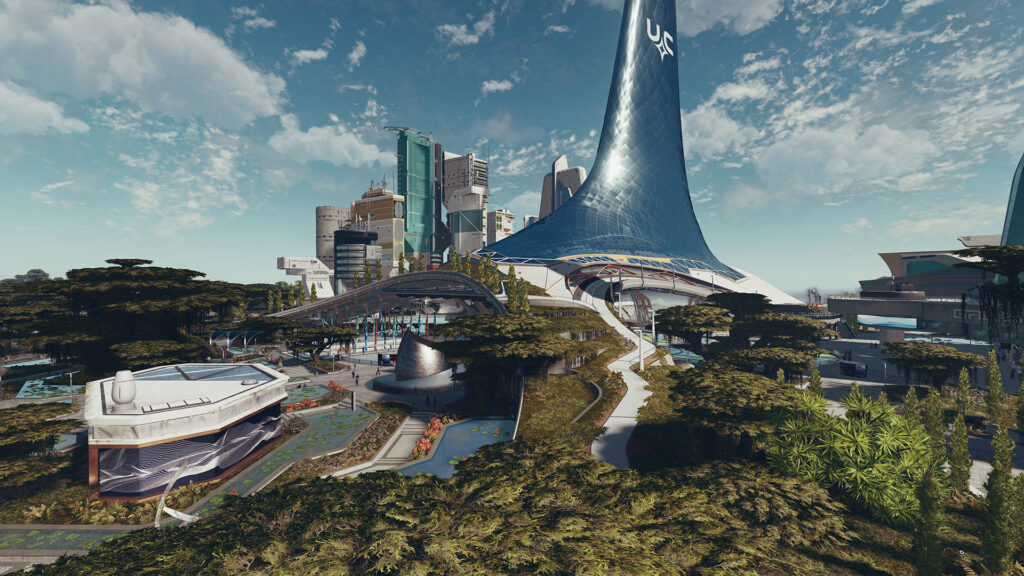
Every planet is explorable but not all planets are worth the exploration. I found that the planets that aren’t procedurally generated are the most enjoyable to explore. This isn’t a bad thing. If all 1,000 planets had an exploration incentive, it would be far too overwhelming. Bethesda has created a strong and appropriate balance.
The Settled Systems is home to many major cities which you will visit through the main questline as well as through side quests. New Atlantis is a hyper-modern capital city, Neon is a pleasure city populated with nightclubs and a drug called “Aurora”, and my personal favourite, Akila, is a space-western city with so much charm and history behind it. You can’t help but spend hours exploring these cities, uncovering new side quests and hidden items.
During your space travels, you will encounter what seems like an endless supply of side quests and activities to take part in. These side quests rarely feel like they were just tacked on for content. They have substance and I got the sense that I was contributing to the world around me no matter how small the task. Some quests are dampened by the lack of vehicles in the game. Travelling across planets only on foot can make exploration feel like a drag. You are equipped with a jetpack but it never felt like it was aiding me to a quicker arrival to my destination.
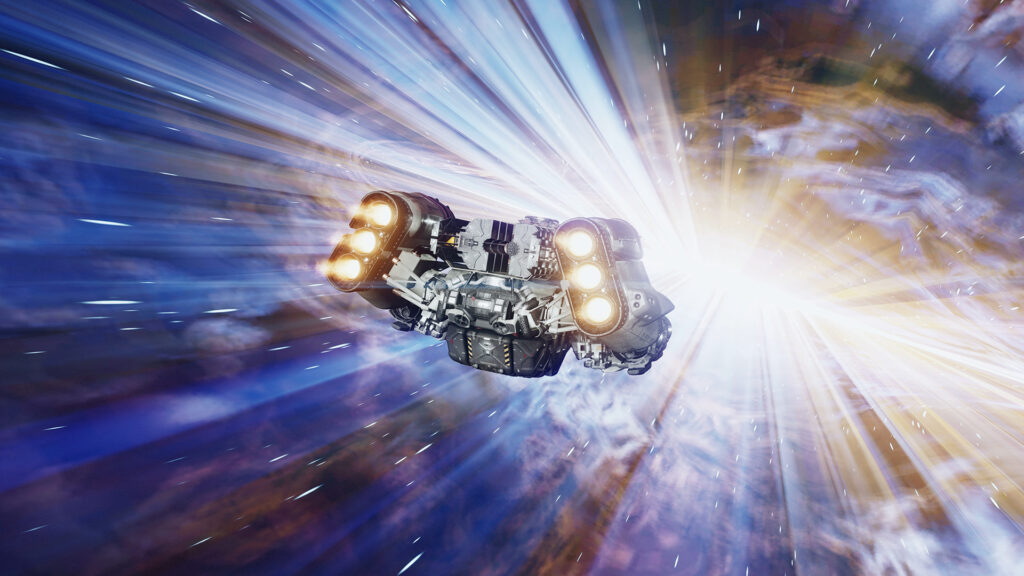
While the combat isn’t that complex, what I did enjoy was fine-tuning my character into a negotiator using the persuasion skill. I could often avoid combat completely just by successfully persuading the enemy to change their point of view on a particular subject. Persuading enemies is not a get-out-of-jail-free card though. You really need to evaluate who you are talking to and what dialogue options would appeal to them the most to get them on your good side.
One aspect of Starfield that wasn’t what I expected was the space exploration or lack thereof. I don’t really know what I was expecting, but exploring the galaxy was not as enthralling as I wanted it to be. Players land on planets automatically via a menu command, and not manually. The spaceship combat is fine but it felt just like the on-ground combat – endless ‘pew pew-ing’ until the enemies are dead. The game doesn’t invite the player to approach space combat in their own way apart from upgraded weapons on your ship.
Bethesda’s iconic yet frustrating encumbered system makes a return. Inventory management is not a strong point of mine, so I often found myself shoving half of my inventory onto my companion just to alleviate the added pressure of being encumbered. I understand why this mechanic is there but even after upgrading my capacity, it never felt like I could carry enough.
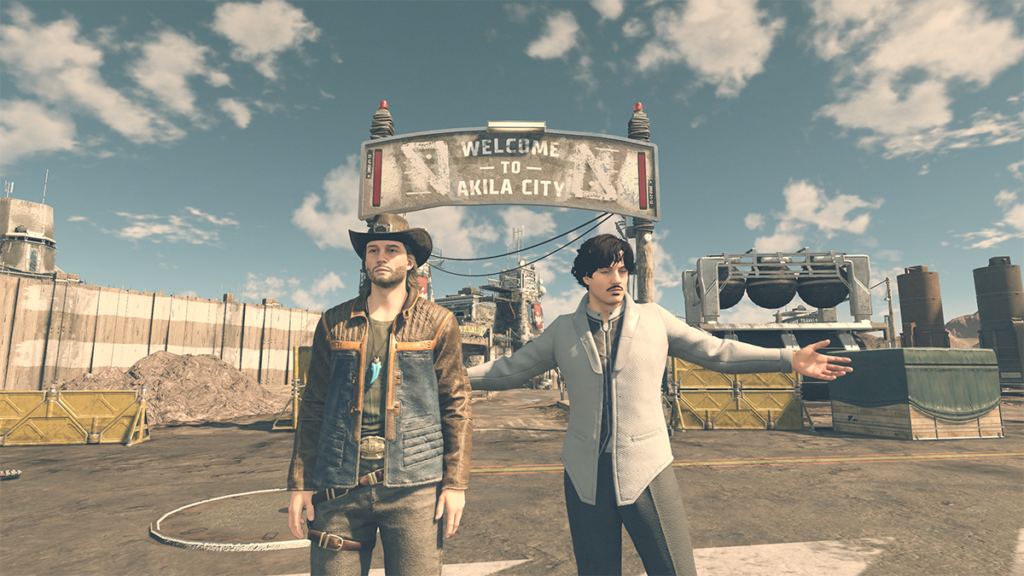
Romance options are limited to members of Constellation (no, you can’t romance the robot). The ever so charming Sam Coe, chair of Constellation Sarah Morgan, scientist and explorer Barrett, and the mysterious Andreja are the 4 marriage candidates you can pursue. There isn’t a huge benefit to marrying any of these companions. Sam Coe was my partner of choice and he gave me his hat. On top of that, you also get XP bonuses and some sweet dialogue options that make you feel gooey inside. Limiting the romance options to just four really assisted with the depth of the relationships you can create in Starfield. It felt genuine at times.
There is a new game plus mode after the main story, but I won’t detail the circumstances surrounding it. Bethesda has included the mode in such a unique way that I’ve never seen before. Not everyone will be a fan of the way they handled it, as it offers the player an overwhelming dilemma.
STARFIELD REVIEW
Bethesda delivers an expansive space experience with Starfield, blending its signature RPG formula with one of the strongest main story plots from its flagship titles. While the monotonous combat may leave some players wanting more, there’s a lot to love here. The immersive cities, engaging plot, and meaningful character interactions make Starfield a worthy addition to Bethesda’s legacy, offering countless hours of exploration and engagement in the Settled Systems.
PROS
- Follows and enhances Bethesda’s award-winning open-world RPG formula
- Every quest feels meaningful and can send you down a rabbit hole
- The main story is the Bethesda’s strongest by far
- Dialogue options chosen can influence how quests pan out and how strong your relationships are
CONS
- The space combat was not as compelling as I wanted it to be
- Combat can feel like a chore at times
